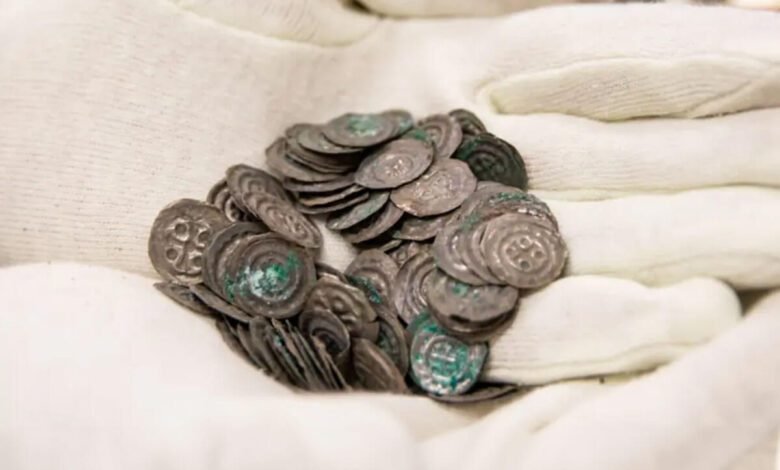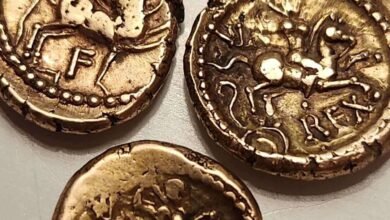Ancient buried treasure found in Christian grave

An ancient burial site contained more than the ancient remains archaeologists expected. Swedish archaeologists unearthed a 12Th Century grave when they discovered about 170 silver coins buried in the grave. The excavation took place near an ancient church on the Swedish island of Visingsö. The grave is believed to belong to a man between the ages of 20 and 25. The coins date from between 1150 and 1180 AD. Project leader Anna Ödéen described in a statement what led to the discovery. “My colleague Kristina Jansson and I found two skeletons in the shaft where the wires were to be laid. We cleaned the bones of those buried to get an idea of what the graves looked like.” The couple quickly realized there was more to the discovery. “Suddenly three silver coins appeared! We quickly discovered that there were many more lying near the victim’s left foot.”
The coins are known as “bracteates,” jewelry pieces made of thin metal in the shape of a coin. The find is unusual because it was an unusual practice for Christians to be buried with worldly possessions. “It is rare for discoveries to be made in Christian graves, this custom dates back to prehistoric times and that makes the Visingsö find special,” Jönköping County Museum said after the find was announced. “The find is something very special, partly because there are only a few similar finds from this period, and partly because some of the coins from before that time are completely unknown.” “It is a completely sensational find that will change the early medieval coinage history in Götaland “will shed light on a time that is largely completely unknown,” said Eeva Jonsson from the Royal Coin Cabinet.
In addition to the coins, the excavation also uncovered 24 graves and 20 fireplaces. 20 graves were found outside the churchyard, making them “unholy,” meaning that these were people who were buried without an “honorable burial.” “In parts of our history, someone who committed suicide could not be given what the Church called an ‘honorable burial,’ and the same was true of unbaptized children and serious criminals… But it turned out not to be “It was just a grave, but…” much more. All were facing the same direction, well aligned and at the same depth. “It was therefore an organized burial site where there should have been a marker above ground,” said Ödéen in a press release.



